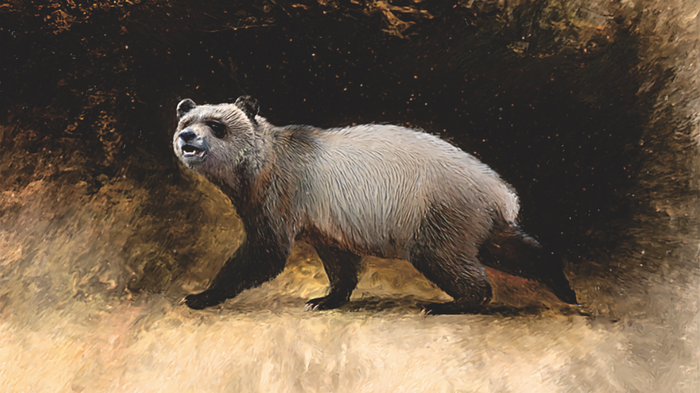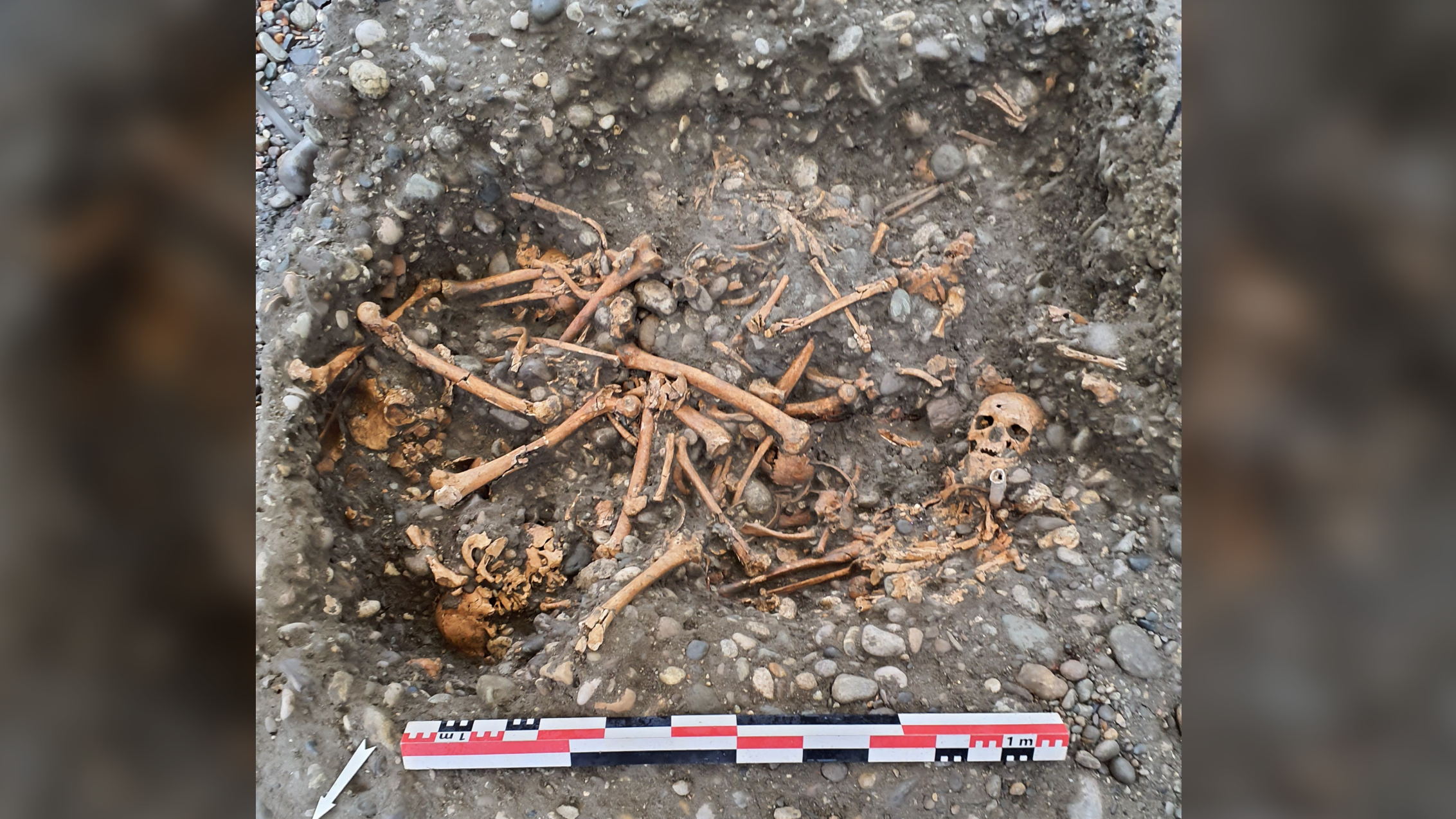Europe’s last pandas were giant weaklings who couldn’t even eat bamboo
The ancient bears disappeared around 6 million years ago, likely due to extreme climate change.
A pair of fossil teeth in a museum collection recently revealed when pandas last roamed Europe.
When researchers examined the teeth, which had been kept in storage for around 40 years, they discovered that the fossils belonged to a never-before-seen species of ancient European panda. The newfound species, which is a close relative of modern giant pandas, roamed the continent around 6 million years ago and was likely the last of Europe's pandas.
The teeth — an upper canine and an upper molar — were originally unearthed during the late 1970s from a site in northwestern Bulgaria, but they ended up in storage at the Bulgarian National Museum of Natural History in Sofia. The teeth were never properly cataloged, and as a result they were left untouched for decades. But when museum staff recently stumbled upon the unusual teeth, they decided to investigate further.
After analyzing the teeth, researchers realized that they belonged to an ancient European panda, but the fossils were unlike any other teeth from panda species previously identified in Europe. Most species of European pandas had smaller teeth than modern giant pandas (Ailuropoda melanoleuca), meaning they were probably much smaller than their modern-day cousins. But the new species, which has been named Agriarctos nikolovi, had much larger teeth than was usual for European pandas, so it was most likely similar in size to today's giant pandas. The teeth also date to much more recently than other European panda fossils, some of which date back to more than 10 million years ago, suggesting that A. nikolovi was likely the last panda species to live on the continent.
"This discovery shows how little we still know about ancient nature," study co-author Nikolai Spassov, a paleontologist at the Bulgarian National Museum of Natural History, said in a statement. The fact that the newly described species came from a specimen found in the 1970s also "demonstrates that historic discoveries in paleontology can lead to unexpected results, even today," Spassov said.
Related: The oldest DNA from giant pandas was just discovered in a cave in China
Despite the size similarities between A. nikolovi and living giant pandas, the newly described species "is not a direct ancestor of the modern genus," Spassov said. But "it is a close relative." However, the new species likely lived in a very different habitat to today’s pandas, he added.
Get the world’s most fascinating discoveries delivered straight to your inbox.
The fossilized teeth were originally found in coal deposits, which had partly tinted the bears' chompers black. The composition of the coal at the site suggests that the area was once a swampy forest. This means that A. nikolovi may have had a much more varied diet than modern pandas do, feasting on a range of soft vegetation rather than exclusively on one type of plant, such as modern pandas' food of choice: bamboo.
Interestingly, giant pandas' digestive systems appear to be capable of processing meat, like other bears do, but they nonetheless stick to a strictly vegetarian diet. Prior research has suggested that giant pandas switched to a diet of bamboo because they were outcompeted by other bears, according to the statement. The researchers think A. nikolovi may also have faced similar evolutionary pressures to adopt a vegetarian diet, as its teeth are much weaker than those of modern pandas, which means they could probably not even chomp through bamboo, let alone something as hard as animals bones.
The study authors also suspect that A. nikolovi may have eventually been wiped out because climate change affected their habitat and diet.
"It is likely that climate change at the end of the Miocene epoch [23 million to 5.3 million years ago] in southern Europe had an adverse effect on the existence of the last European panda," Spassov said. The researchers suggested that A. nikolovi may have been especially vulnerable to an event that unfolded around 6 million years ago: the "Messinian salinity crisis," when the Mediterranean Sea almost completely dried up, which had serious repercussions for terrestrial ecosystems. The ancient panda's swampy forests likely became much drier and warmer, making it harder for plants to grow and likely starving the pandas, according to the statement.
The team remains uncertain about how exactly A. nikolovi and other extinct European pandas are related to giant pandas and ancient Asian pandas. It is currently unclear if pandas first originated in Asia and migrated to Europe, or vice versa. However, the researchers suspect that a European origin for pandas is more likely because fossil evidence shows that “the oldest members of this group of bears were found in Europe," Spassov said. But as the new fossils belong to the youngest of Europe's long-gone pandas, they will probably not shed light on this particular mystery, the scientists reported.
The study was published online July 31 in the Journal of Vertebrate Paleontology.
Originally published on Live Science.

Harry is a U.K.-based senior staff writer at Live Science. He studied marine biology at the University of Exeter before training to become a journalist. He covers a wide range of topics including space exploration, planetary science, space weather, climate change, animal behavior and paleontology. His recent work on the solar maximum won "best space submission" at the 2024 Aerospace Media Awards and was shortlisted in the "top scoop" category at the NCTJ Awards for Excellence in 2023. He also writes Live Science's weekly Earth from space series.




